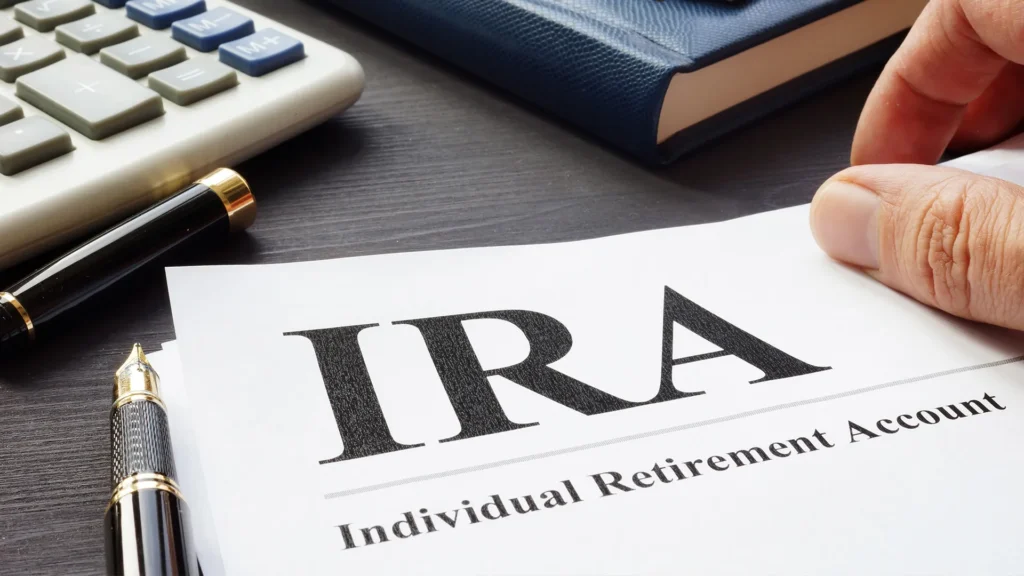Retirement planning is a crucial aspect of personal finance, ensuring that individuals can maintain their desired lifestyle and financial security after leaving the workforce. Various retirement plans offer different benefits and tax advantages. Here, I’ll explain some common retirement plans in USA in detail including Social Security, 401(k) plans, and Individual Retirement Accounts (IRAs).

Table of Contents
1. Social Security:
Social Security is a government program in the United States that provides financial assistance to retirees, disabled individuals, and survivors. Workers contribute to Social Security through payroll taxes, and the benefits are based on the individual’s earnings history.

How it Works:
- During your working years, you and your employer contribute a percentage of your income to the Social Security system.
- Your benefit amount is determined by your highest 35 years of earnings, adjusted for inflation.
- You become eligible for Social Security benefits at age 62, but the full retirement age (FRA) varies depending on your birth year. FRA is currently 66 for those born between 1943 and 1954, gradually increasing to 67 for those born in 1960 or later.
- Delaying claiming benefits beyond your FRA can increase your monthly payments, up to age 70.
Pros:
- Guaranteed income for life.
- Inflation-adjusted benefits.
- Spousal and survivor benefits are available.
Cons:
- Benefits alone may not be sufficient for a comfortable retirement.
- Uncertainty about the future of the program.
2. 401(k) Plans – One of the Retirement Plans:
A 401(k) is an employer-sponsored retirement savings plan that allows employees to contribute a portion of their salary on a pre-tax basis. Employers may also match a percentage of the employee’s contributions, providing an additional incentive for retirement savings.

How it Works:
- Employees contribute a portion of their salary to a 401(k) account on a pre-tax basis, reducing their taxable income.
- Employers may match a percentage of the employee’s contributions, offering free money towards retirement.
- Contributions grow tax-deferred until withdrawal, usually in retirement.
- Withdrawals are taxed as ordinary income, and there may be penalties for early withdrawals before age 59½.
Pros:
- Employer matching contributions boost retirement savings.
- Tax advantages through pre-tax contributions and tax-deferred growth.
- Portability – the account can be rolled over to another employer’s plan or an IRA if you change jobs.
Cons:
- Limited investment options determined by the employer.
- Early withdrawal penalties and mandatory minimum distributions after age 72.
3. Individual Retirement Accounts (IRAs):
IRAs are individual retirement savings accounts that provide individuals with a tax-advantaged way to save for retirement. There are two main types of IRAs: Traditional and Roth.

How it Works:
- Traditional IRA: Contributions are made with pre-tax dollars, reducing taxable income. Withdrawals in retirement are taxed as ordinary income.
- Roth IRA: Contributions are made with after-tax dollars, but qualified withdrawals in retirement are tax-free.
- Both types have annual contribution limits and may offer a range of investment options.
Pros:
- Tax advantages – either upfront (Traditional) or upon withdrawal (Roth).
- Flexible investment options, including stocks, bonds, and mutual funds.
- No required minimum distributions for Roth IRAs during the account owner’s lifetime.
Cons:
- Contribution limits may be lower compared to employer-sponsored plans.
- Early withdrawal penalties may apply, depending on the circumstances.
In addition to Social Security, 401(k) plans, and Individual Retirement Accounts (IRAs), there are several other retirement plans that individuals can consider. Each plan comes with its own set of features, benefits, and considerations. Let’s delve into three more retirement plans: Pension Plans, Health Savings Accounts (HSAs), and Annuities.
4. Pension Plans:
Pension plans, also known as defined benefit plans, are employer-sponsored retirement plans that promise a specific monthly benefit to employees upon retirement. The employer bears the investment risk and typically calculates the benefit based on factors like salary and years of service.
How it Works:
- Employees contribute a portion of their salary to the pension plan.
- Employers also make contributions, and the plan’s administrators invest these funds.
- The benefit amount is usually determined by a formula that considers factors like years of service and average salary.
Pros:
- Guaranteed income for life, often with cost-of-living adjustments.
- Employer bears the investment risk.
- Provides a stable income stream in retirement.
Cons:
- Decline in popularity in the private sector; many companies have shifted to 401(k) plans.
- Limited control over investments by the individual.
5. Health Savings Accounts (HSAs):
While primarily designed for healthcare expenses, Health Savings Accounts (HSAs) can serve as a valuable retirement savings tool. HSAs are available to individuals with high-deductible health insurance plans.

How it Works:
- Contributions to HSAs are made with pre-tax dollars.
- Funds can be used for qualified medical expenses at any time without tax implications.
- After age 65, withdrawals for non-medical expenses are penalty-free, though income tax may still apply.
Pros:
- Triple tax advantage: Contributions are tax-deductible, earnings grow tax-free, and withdrawals for qualified medical expenses are tax-free.
- Unused funds roll over from year to year.
- Can be used as a supplementary retirement fund if medical expenses are minimal.
Cons:
- Must have a high-deductible health insurance plan to qualify.
- Limited annual contribution limits.
6. Annuities:
Annuities are financial products offered by insurance companies, providing a stream of income in retirement. There are various types of annuities, including fixed, variable, and indexed annuities.
How it Works:
- Individuals make a lump-sum payment or a series of payments to the insurance company.
- In return, the insurance company provides regular payments, either immediately or at a specified future date.
- Annuities can be structured to provide income for a set number of years or for the individual’s lifetime.
Pros:
- Guaranteed income, particularly with fixed annuities.
- Options for lifetime income streams, offering protection against outliving savings.
- Tax-deferred growth on earnings until withdrawal.
Cons:
- Complexity and fees associated with some annuity products.
- Limited liquidity and potential surrender charges for early withdrawals.
- Inflation can erode the purchasing power of fixed annuity payments.
Conclusion:
In conclusion, a well-rounded retirement plan often involves a combination of these options. Social Security provides a baseline, while employer-sponsored plans like 401(k)s offer valuable contributions and potential matching. IRAs provide additional flexibility and control over investments. The key is to start early, contribute consistently, and regularly reassess your retirement plan as your financial situation evolves. Consulting with a financial advisor can help tailor these plans to your specific needs and goals, ensuring a more secure and comfortable retirement.
Good Read: Proven Impact of Raising the Retirement Age: Pros and Cons
It’s crucial for individuals to assess their financial goals, risk tolerance, and individual circumstances to determine the most suitable mix of retirement plans. Consulting with a financial advisor can help create a personalized retirement strategy that aligns with your objectives, ensuring a more secure and comfortable retirement. Regularly reviewing and adjusting your plan as circumstances change is also essential for long-term financial success.



